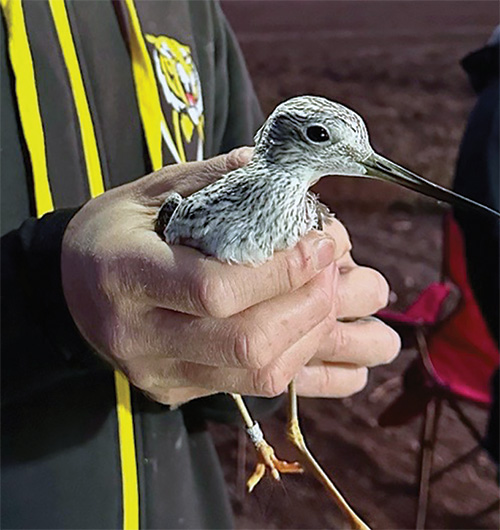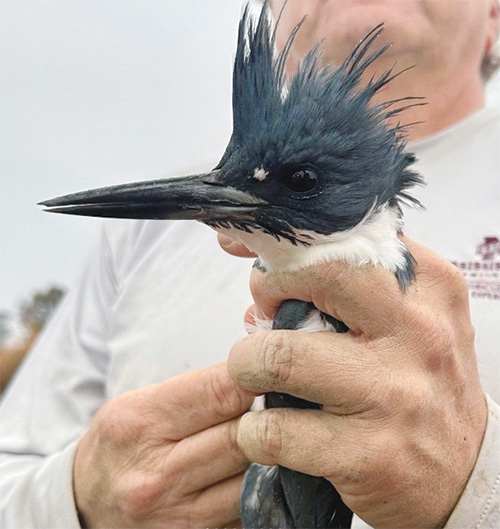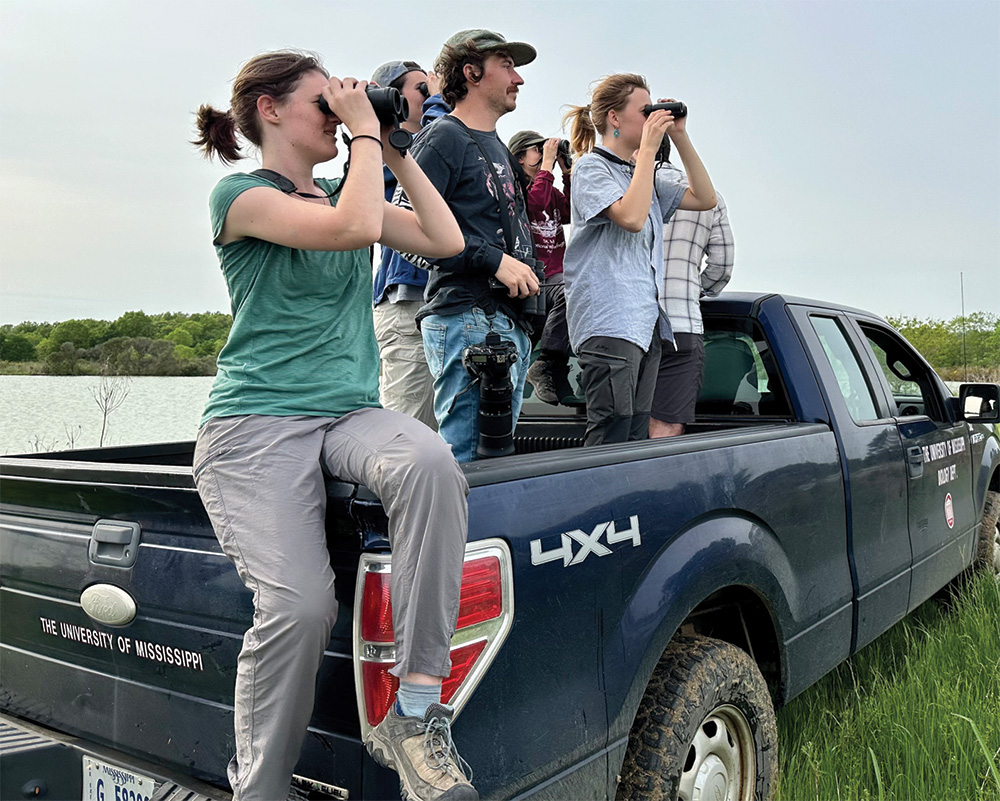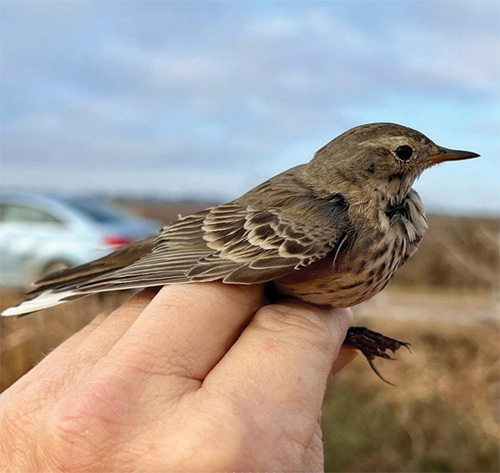By JIM BEAUGEZ
Jason Hoeksema and Delta Wind Birds work to create Delta habitat for dwindling numbers of migrating shorebirds

Thousands of feet above the Mississippi Delta, the region’s proliferation of oxbow lakes, catfish ponds, and bayous shimmer in the sunlight. To the human eye, it can appear as if a map were laid flat over the alluvial plain, the curvatures where land meets water defined and each body of water uniform.
But the birdwatchers and waterfowl hunters who flock to these vantages to view and hunt certain species as they travel along the Mississippi Flyway, a bird migration route that follows the Mississippi River and its major tributaries, know that can’t be entirely true. Each backwater, pond and river is its own micro-ecosystem, with differences in depth and drainage and man-made obstructions wielding influence over them.
Perhaps no family of birds understands this as well as shorebirds, a group that includes familiar species such as snipe, woodcock and killdeer, and lesser-known species such as sandpipers, plovers, godwits and willets. These birds account for forty percent of all migrating waterbirds in North America, and more than half a million of them migrate through the Delta each year. And not many people are as closely attuned to their plight as Jason Hoeksema, co-founder of Delta Wind Birds and the president of its board of directors.

“There’s a real lack of stopover habitat that is appropriate for those birds in this area,” says Hoeksema, who is also a biology professor at the University of Mississippi. “Historically, there was more, before the advent of modern agriculture.”
Migratory songbirds such as warblers, buntings and grosbeaks have historically arrived in spring and early summer, while herons, egrets and cormorants reach peak numbers in late summer and autumn. During late fall and winter, a number of varieties of waterfowl—various ducks, geese and related species—seek food and shelter in the Delta. Among the shorebirds, some species only stop in the Delta on their fall and spring migratory journeys, while others spend the winter.
“Shorebirds don’t just occur on the ocean shore—they are a group of birds that migrate through Mississippi mainly and stop anywhere they can find shallow water and mud flats, where they probe for insects and other invertebrates to eat,” he says. “These are really special birds because most of them nest in the Arctic, but they spend the winter anywhere from the Mississippi Delta all the way down to the southern tip of South America, and they come through Mississippi in huge numbers.”
Today, though, there are fewer of these birds filling the skies, fields and waterways of the Delta. The number of shorebirds participating in these seasonal rituals along North American flyways has declined 33 percent since 1970, according to the North American Bird Conservation Initiative. Delta Wind Birds, a conservation group founded in 2013, raises funds to create temporary stopover habitat for these migratory waterbirds on private lands.

“Mostly we contract with private landowners and pay them a fee that helps to offset the costs of water management that benefits these birds,” he says.
Hoeksema, a Michigan native, caught the birdwatching bug at an early age thanks to the influence of his nature-loving family members. “My parents and my grandparents always had bird feeders in their yards and binoculars and bird books sitting around. I got sucked into the fun of watching bird behavior and the challenge of bird identification.” He even spent spring breaks with his family in Panama City Beach, Florida—a well-known party spot for college spring breakers—getting up early in the morning to birdwatch at St. Andrews State Park along the Gulf of Mexico, long before the previous night’s revelers were awake.
After becoming a regular visitor to the Delta, Hoeksema and his colleagues realized that disused or fallow farm lands, or fields that have already been harvested, could provide temporary, seasonal habitat for migratory shorebirds and possibly help to restore their populations.

“Certainly these birds have the ability to somewhat adjust their migratory pathway if there’s better habitat elsewhere, but if that requires them to fly farther, they use more energy and reach those stopover places with lower fat reserves. It takes them longer to refuel, and it’s thought to decrease their rate of survival overall.”
Delta Wind Birds’s efforts focus on working with crop farmers, especially those who are growing corn, which is harvested early in the fall, to put water back out on crop fields after the corn is harvested. Benefits to the practice potentially serve multiple purposes. The temporary, shallow wetlands draw in birds that can hunt for invertebrates in the mud, aerating the soil with their beaks and depositing fertilizing nitrogen and phosphorus into the fields through digestion. In some cases, they’ve shown that crop yields are slightly higher on fields that have previously been flooded.
In addition to the group’s work with farmers, it also owns 14 acres bordering Sky Lake in the central Delta near Belozni. The DWB Sky Lake Nature Reserve is located across the water from Sky Lake Wildlife Management Area, a conservation district maintained by the Mississippi Department of Wildlife, Fisheries and Parks for recreation and sport. Visitors to the WMA can walk the half-mile, maintained boardwalk among these ancient trees, while visitors to the DWB Nature Reserve can pick out birds on the lake itself.

“Sky Lake WMA contains around its perimeter, and especially at the north and south ends, one of the best remnants of old-growth bottomland, hardwood trees in the southeast,” he says. “Specifically, it’s bald cypress and tupelo swamp, and some of the bald cypress trees there are more than 1,000 years old. They’re gigantic and ancient, and they’re really stunning.”
By contrast, the reserve is more rustic but offers direct access to the lake and the remnants of a bald cypress swamp along the water’s edge.
The group also helps private, non-agricultural concerns restore shorebird habitat. Four Winds Refuge, located a short distance from the DWB Sky Lake Nature Reserve, currently maintains 800 acres for private use. Bill Sullivan, one of the refuge’s owners, says they have used the property to raise bees, hunt small game and observe wildlife. “We have every kind of Mississippi mammal you could imagine on that place, so we have a lot of things to see and watch,” Sullivan says. “And we love to watch and manage for shorebirds.”

Sullivan says Delta Wind Birds works with him and the other owners to return the parcel back to its natural hydrology. “We’re looking to maintain habitat for wintering and migrating shorebirds, and rearing shorebirds is quite a niche—these birds travel thousands of miles back and forth, maybe across multiple continents,” he says. “Among all the shorebirds, these few 100 species of shorebirds are mysterious. We don’t understand what motivates them to do that, and we don’t understand much about them at all. And their numbers are plummeting.”
All of which, naturally, keeps the docket full for Delta Wind Birds.
“We love connecting with landowners who are looking for ways to be even more conservation-minded in the way they manage their land, and we can provide ideas for that and some resources, as well,” Hoeksema says. “That’s really at the center of our mission.”
deltawindbirds.org



